Human Orbital Spaceflights
![]()
International Flight No. 77STS-1Columbia (1)1st Space Shuttle missionUSA |
 |
|
![]()
Launch, orbit and landing data
walkout photo |
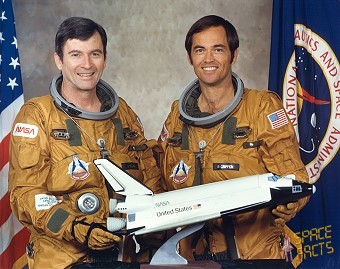 |
|||||||||||||||||||||||||||||
alternative crew photo |
alternative crew photo |
|||||||||||||||||||||||||||||
alternative crew photo |
||||||||||||||||||||||||||||||
alternative crew photo |
||||||||||||||||||||||||||||||
Crew
| No. | Surname | Given names | Position | Flight No. | Duration | Orbits | |
| 1 | Young | John Watts | CDR, EV-1 | 5 | 2d 06h 20m 52s | 37 | |
| 2 | Crippen | Robert Laurel "Crip" | PLT | 1 | 2d 06h 20m 52s | 37 |
Crew seating arrangement
|
 |
|
||||||||||||
Backup Crew
|
 |
|||||||||||||||
Hardware
| Orbiter : | OV-102 (1.) |
| SSME (1 / 2 / 3): | 2007 (1.) / 2006 (1.) / 2005 (1.) |
| SRB: | A7/8 / SRM-1 |
| ET: | ET-1 (SWT-1) |
| OMS Pod: | Left Pod 02 - LV 01 (1.) / Right Pod 02 - RV 01 (1.) |
| FWD RCS Pod: | FRC 2 (1.) |
| RMS: | - |
| EMU: | EMU No. 1002 (PLSS No. 1003) / EMU No. 1003 (PLSS No. 1005) |
Flight
|
Launch from Cape Canaveral (KSC) and
landing on Edwards AFB, Runway 23. A launch attempt 2 days earlier was
scrubbed because of a timing problem in one of the Columbia's general
purpose-computers. STS-1 and the three flights following were engineering test flights to prove out the Shuttle system in launch, orbital and landing operations. As the first manned orbital flight, STS-1's flight profile has been designed to minimize structural and operational loads on the spacecraft and its boosters. Orbiter Columbia's cargo bay bared for this first test flight except for a data collection and recording package called developmental flight instrumentation (DPI) and an aerodynamic coefficient identification package (ACIP). Not only was this the first launch of the Space Shuttle, but it marked the first time that solid-fuel rockets were used for a NASA manned launch (although all of the Mercury and Apollo astronauts had relied on a solid-fuel motor in their escape towers). The orbiter Experiments Program experiments included: "Aerodynamic Coefficient Identification Package" (ACIP): The primary objectives of ACIP were to collect aerodynamic data during the launch, entry and landing phases of the Shuttle, to establish an extensive aerodynamic data base for verification of and correlation with ground-based test data, including assessments of the uncertainties in such data, to provide flight dynamics data in support of other technology areas, such as aerothermal and structural dynamics. The Aerodynamic Coefficient Identification Package incorporates three triads of instruments: one of dual-range linear accelerometers; one of angular accelerometers; and one of rate gyros. Also included in this package were the power conditioner for the gyros, the power control systems and the housekeeping components. The package will be installed co-linearly with the geometric axes of the orbiter and post-installation measurements will be made to establish the position within 10 arc minutes. The instruments continuously sense the dynamic X, Y and Z attitudes and performance characteristics of the orbiter through these critical flight phases. In addition, the package received orbiter control surface position data and converts these into higher orders of precision before recording them with the attitude data. "Infrared Imagery of Shuttle" (IRIS): The objective was to obtain high-resolution infrared imagery of the orbiter lower (windward) and side surfaces during entry from which surface temperatures and hence aerodynamic heating may be inferred. The imagery was to obtain using a 91.5-centimeter (36-inch) telescope mounted in the NASA C-141 Gerald P. Kuiper Airborne observatory positioned appropriately at an altitude of 13,716 m (45,000 ft.) along the entry ground track of the orbiter. A single image will be obtained during each flight. The primary technology objective was to decrease the current level of uncertainty associated with various entry aerothermodynamic phenomena that affect the thermal protection system design. The phenomena include boundary layer transition, flow separation and reattachment, flow/surface interactions, and surface catalysis to flow chemistry. These data will provide for improved computational procedures and lead to the development of advanced thermal protection systems. The Infrared Imagery of Shuttle system consists of the C-141 aircraft and its optical system, a 6-cm (2.36-in.) aperture acquisition telescope focal plane system with detector array, and a high-speed data handling and storage system. To conduct the observations, the aircraft will operate from Hickam Air Force Base, Hawaii. The aircraft was stationed along the orbiter entry ground track about one hour prior to reentry. As the orbiter passes through the field of view of the telescope, the orbiter windward or side surface will be observed by the detector system and the data recorded on tape. During the second orbit Columbia's payload bay doors were opened, and the space radiators took over the job of dumping systems and metabolic heat into space. Except for lining up for an orbital Maneuvering System burn or inertial platform alignment, Columbia spend most of its first flight with her topside and open payload bay doors facing Earth. Much of the engineering data from STS-1 were measurements of how well orbiter thermal loads are handled by the space radiators, flash evaporators and ammonia boiler heat rejection systems. John Young became the first astronaut, who performed five missions. STS-1 was the first test-flight of what was, at the time, the most complex spacecraft ever built. Numerous anomalies were observed during and after the flight, owing to the many components and systems that could not otherwise be adequately tested. Notable anomalies included: Noise from the main engines and the SRBs reflecting up off the concrete pad caused visible and potentially damaging oscilations in the tail of the orbiter at launch. Before subsequent launches, NASA installed a water spray sound supression system which was used throughout the shuttle program. Pilot Robert Crippen reported that, throughout the first stage of the launch up to SRB separation, he saw "white stuff" coming off the External Tank and splattering the windows, which was probably the white paint covering the ET's thermal foam. The astronauts' on-orbit visual inspection showed significant damage to the thermal protection tiles on the OMS/RCS pods at the orbiter's aft end, and John Young reported that two tiles on the nose looked like someone had taken "big bites out of them." Classified cameras at a United States Air Force satellite tracking station in Hawaii took high-resolution photographs of the shuttle in orbit, and NASA concluded that the damage didn't constitute a "major problem." Post-flight inspection of Columbia confirmed that approximately 16 undensified tiles near the OMS pod had been lost during ascent. The orbiter's heat shield was damaged when an overpressure wave from the solid rocket booster caused a forward RCS oxidizer strut to fail. The same overpressure wave also forced the shuttle's "body flap" – an extension on the orbiter's underbelly that helps to control pitch during reentry - more than 5° out of position and into an angle well beyond the point where cracking or rupture of the hydraulic system would have been expected. Such damage would have made a controlled descent nearly impossible, with John Young later admitting that had the crew been privy to the potential for catastrophe, they would have flown the shuttle up to a safe altitude and ejected, causing Columbia to have been lost on the first flight. Initial analysis of this anomaly suggested that the body flap was out of position due to a misprediction of the pitching moment at hypersonic speeds. The strike plate next to the forward latch of Columbia's external tank door was melted and distorted due to excess heat exposure during reentry. This heat was attributed to an improperly installed tile adjacent to the plate. During remarks at a 2003 gathering, John Young stated that a protruding tile gap filler ducted hot gas into the right main landing gear well, which caused significant damage, including the buckling of the landing gear. Buckling of the door, but not the landing gear, was documented in the post-flight anomaly report. |
Photos / Graphics
 |
 |
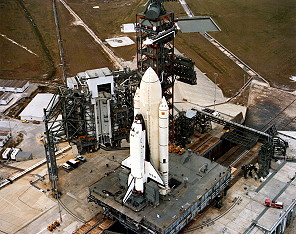 |
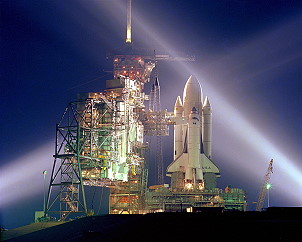 |
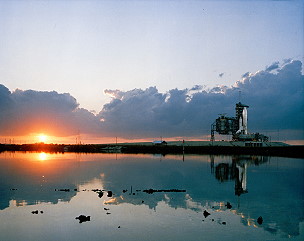 |
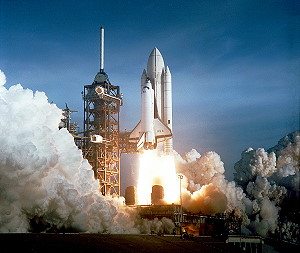 |
 |
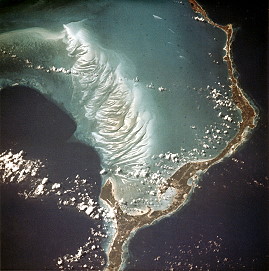 |
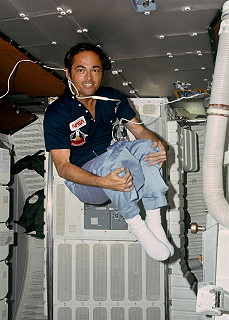 |
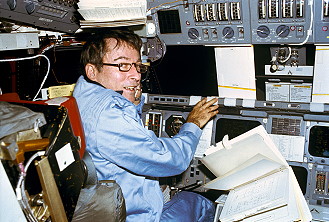 |
 |
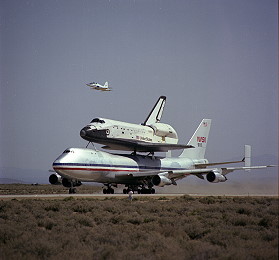 |
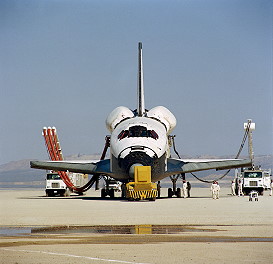 |
|
more Earth observation photos |
|
| © |  |
Last update on March 26, 2020.  |
 |